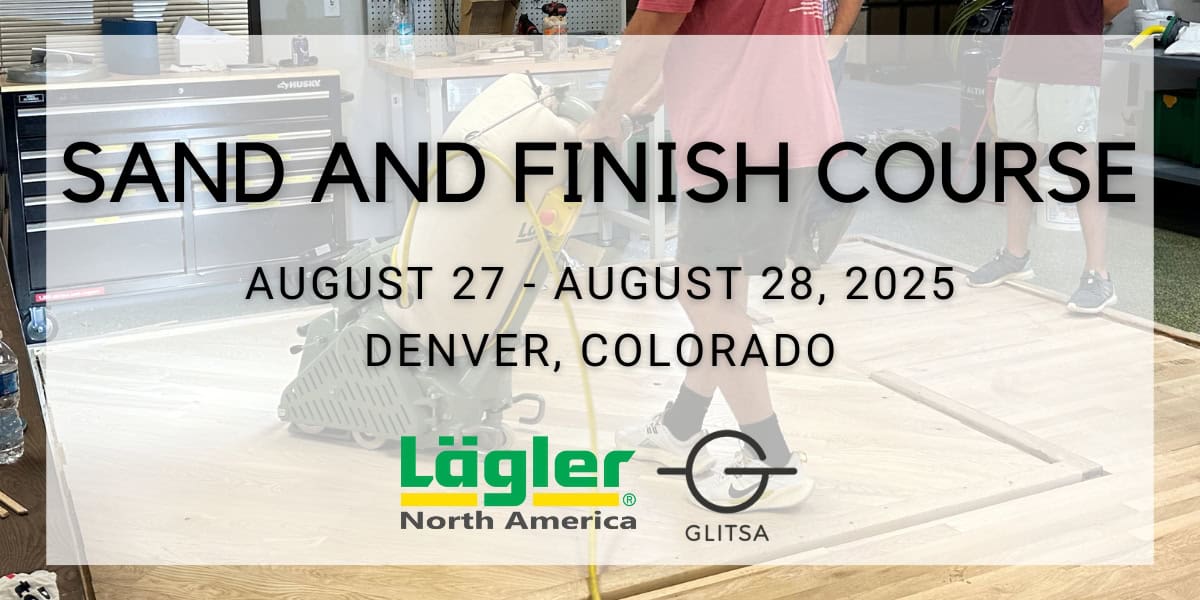
You are here:

The past several months we’ve laid out how-to tips for using the big machine, edger, multi-disc sander and buffer.
It’s a series of blog posts at your fingertips, but it’s also based on an industry-leading instruction manual written by Karl Lägler, “Sanding of Wooden
Floors,” which is available for download at laegler.com.
Now, let’s finish the floor.
Before you start finishing a wood floor, take these key tips into account. It’s the details that make the difference between getting a referral or getting
a call back.
And it’s important to always follow the processing instructions in the finish manufacturer’s data sheets (e.g. coating quantity, method, processing temperature,
residence time, drying time).
Upfront communication goes a long way. As an expert in wood flooring, sometimes it’s easy to take for granted what the “basics” are and forget that homeowners
are relying on you to educate them through every step of the process.
Let your customers know:
And remind your crew that clearly visible brush strokes or material accumulations can be costly. If the customer complains about such defects, it could
lead to resanding and finishing the job – and an unhappy experience for you and the customer.
After you have thoroughly vacuumed the wood flooring and expansion gaps …
Wood Floor Finishing Using a Primer
Most finishing systems consist of three layers. A primer is usually applied as the first coat. The primer ensures optimal adhesion between the wood and
finish, and reduces the side-bonding effect of the finish.
The surface is not intermediately sanded after the primer coating. Instead, the first finish layer is applied. The intermediate finish sanding step is
carried out after the first finish layer has dried.
Wood Floor Finishing Without Using a Primer
Three finish coats are required if no primer is used. Instead of the primer, the first finish coat is applied, and then the second and third finish coats.
In this case, intermediate finish sanding is necessary, following the first and second finish coats.
An additional intermediate finish sanding step can be carried out on heavily used wood flooring which was not primed before finishing. This is followed
by an additional fourth finish coat.
Each additional finish coat increases the total thickness of the finish and causes the wood surface to lose part of its natural appearance.
Finishing Floor Boards and Strip Flooring
Finish should generally be applied to floor boards and strip flooring in the lengthwise direction, since the finish can otherwise collect in the joints
or beveled edges. This leads to increased lateral bonding and stresses the wood flooring.
The wood grains on the surface may become raised after the first finish coat. This makes the surface rough. It must be smoothed out by the intermediate
finish sanding step. Multi-disc sanders and buffers, each with sanding screens (generally using grits 100 to 150), are particularly suited for this.
Using a sanding screen with driver pad is less aggressive than hook-and-loop sanding discs. Since the surface only needs to be smoothed, the machine must
be moved quickly and at a low sanding pressure (without additional weight).
The edge areas where the finish coating is not yet sanded following the usage of the multi-disc sander or buffer should be sanded manually with a sanding
block or an orbital sander, and only at low pressure.
The same sanding screen – same material and grit — must be used for the intermediate sanding of the field and edges. Different degrees of roughness in
the field and edges otherwise lead to differences in the brightness. That creates a visible transition from the field to the edge area of the finished
flooring.
Ensure the finish coat is not sanded through. That will cause the sanded through spot to stand out as darker areas after additional finish coats.
The use of a used sanding screen is recommended to reduce the risk of sanding through the finish layer during intermediate finish sanding.
The wood flooring and the expansion gaps must be thoroughly vacuumed after every intermediate finish sanding step.
Airborne dust must be minimized otherwise it deposits on the freshly finished field and can lead to embedded dust.
To learn more, or to get more information to share with your crew, look through the Lägler North America blog.
Also, download Lägler’s free “Sanding of Wooden Floors” manual.
It’s written by the leading floor sanding expert in the world.
How to Minimize Sanding Efforts + Maximize Business Profits
Big Machine Sanding Direction, Speed + Pressure
Abrasives: Cost vs Value of Quality

Lägler North America, a division of Palo Duro Hardwoods, is the North American distributor of machines and parts manufactured by Eugen Lägler GmbH in Germany. We are North America’s machine repair center, and offer Lägler’s one-day Premium Sanding Technology (PST®) certification course.
Copyright © 2020 Lägler North America. All Rights Reserved.